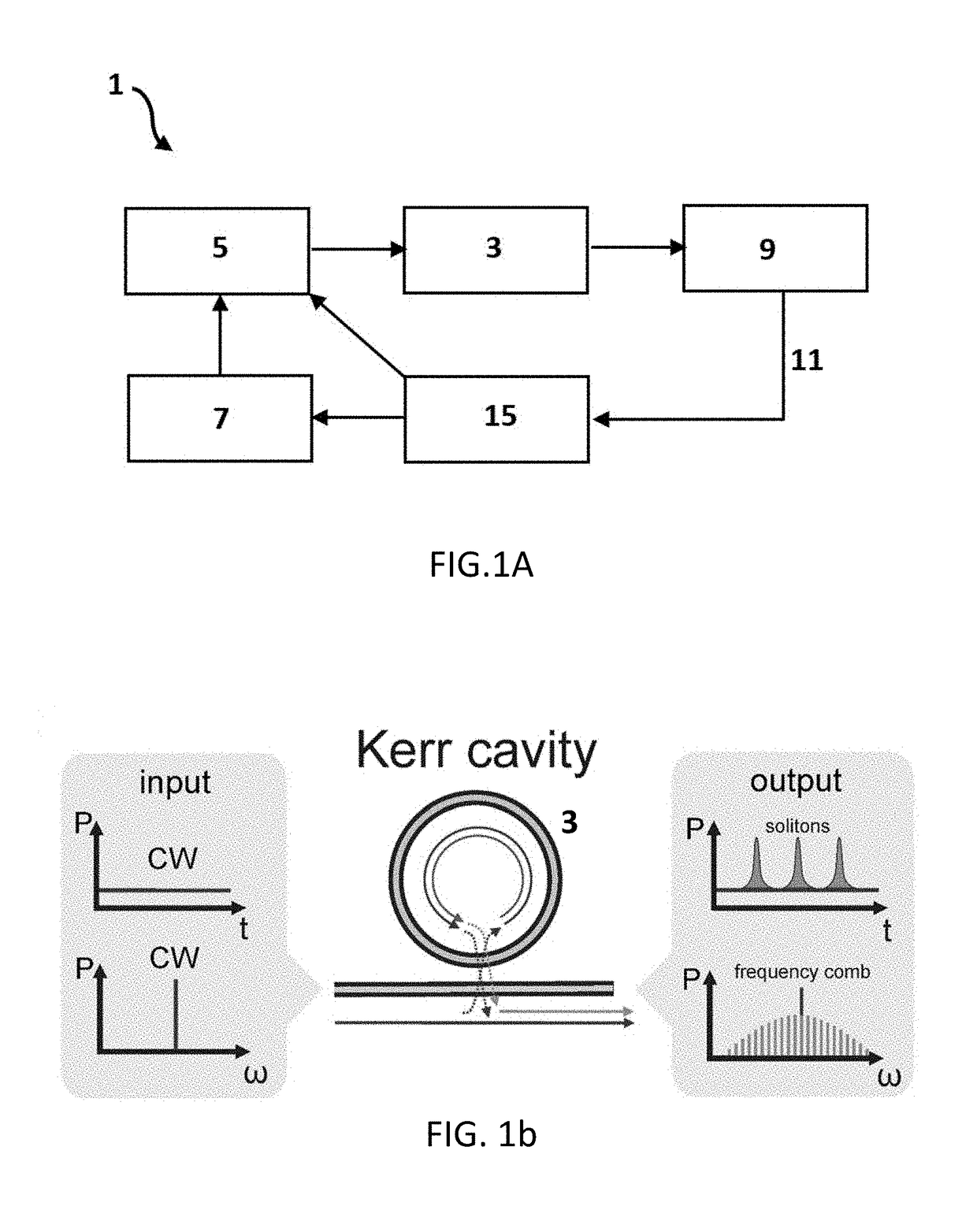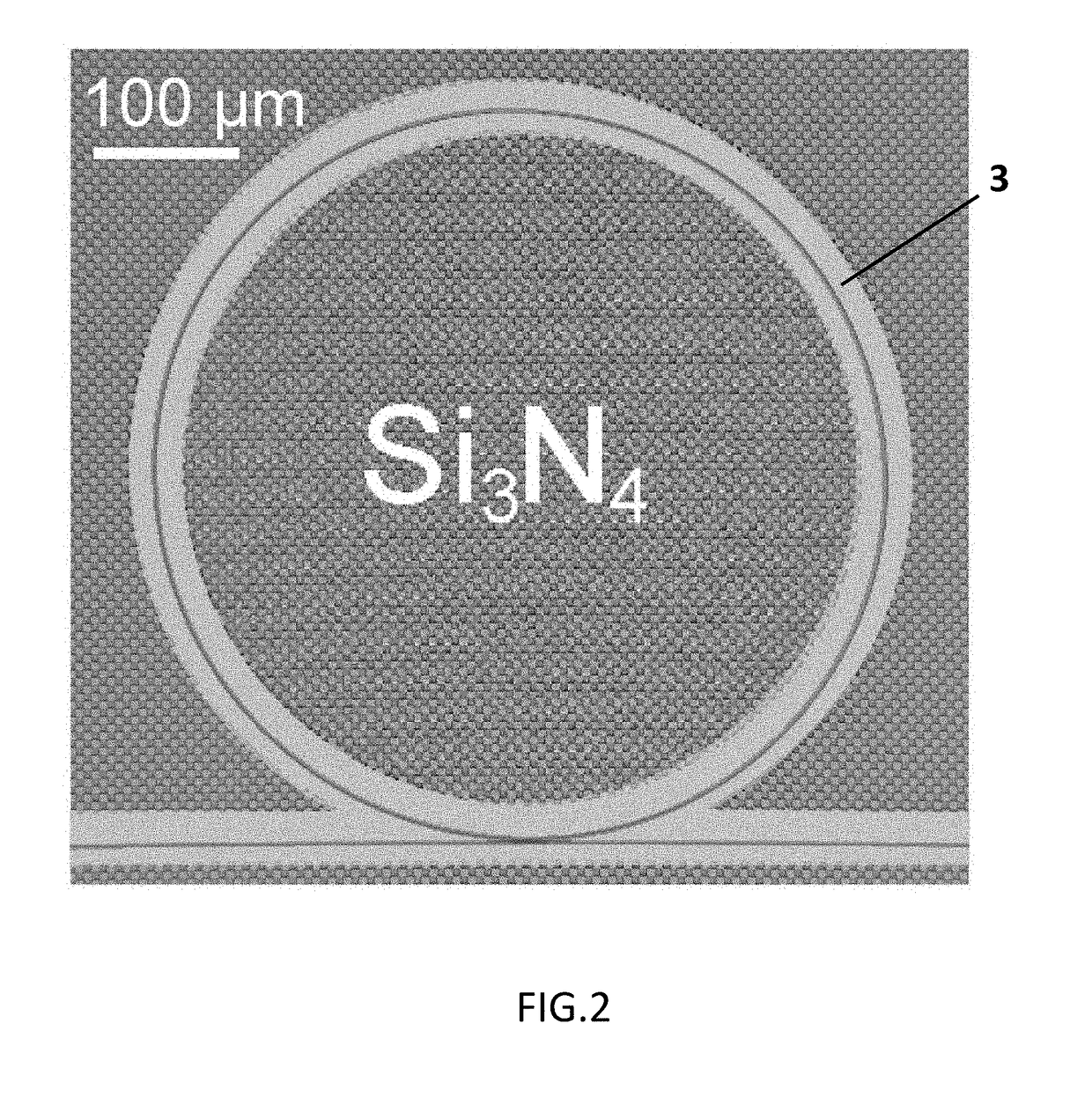Single and Multiple Soliton Generation Device and Method
- Summary
- Abstract
- Description
- Claims
- Application Information
AI Technical Summary
Benefits of technology
Problems solved by technology
Method used
Image
Examples
Embodiment Construction
[0081]The present invention relates to a novel mechanism which makes it possible to reduce deterministically the number of solitons, one by one, i.e. N→N−1→ . . . →1. By applying for example weak phase modulation, the soliton state is directly characterized via a double-resonance response. The dynamical probing demonstrates that transitions occur in a predictable way, and thereby enables to map experimentally the underlying multi-stability diagram of dissipative Kerr solitons. These measurements reveal the “lifted” degeneracy of soliton states as a result of the power-dependent thermal shift of the cavity resonance (i.e. the thermal nonlinearity). The experimental results are in agreement with theoretical and numerical analysis that incorporate the thermal nonlinearity.
[0082]By studying two different microresonator platforms (integrated Si3N4 microresonators and crystalline MgF2 resonators) it is confirmed that these effects have a universal nature. Beyond elucidating the fundamenta...
PUM
 Login to View More
Login to View More Abstract
Description
Claims
Application Information
 Login to View More
Login to View More - R&D
- Intellectual Property
- Life Sciences
- Materials
- Tech Scout
- Unparalleled Data Quality
- Higher Quality Content
- 60% Fewer Hallucinations
Browse by: Latest US Patents, China's latest patents, Technical Efficacy Thesaurus, Application Domain, Technology Topic, Popular Technical Reports.
© 2025 PatSnap. All rights reserved.Legal|Privacy policy|Modern Slavery Act Transparency Statement|Sitemap|About US| Contact US: help@patsnap.com



